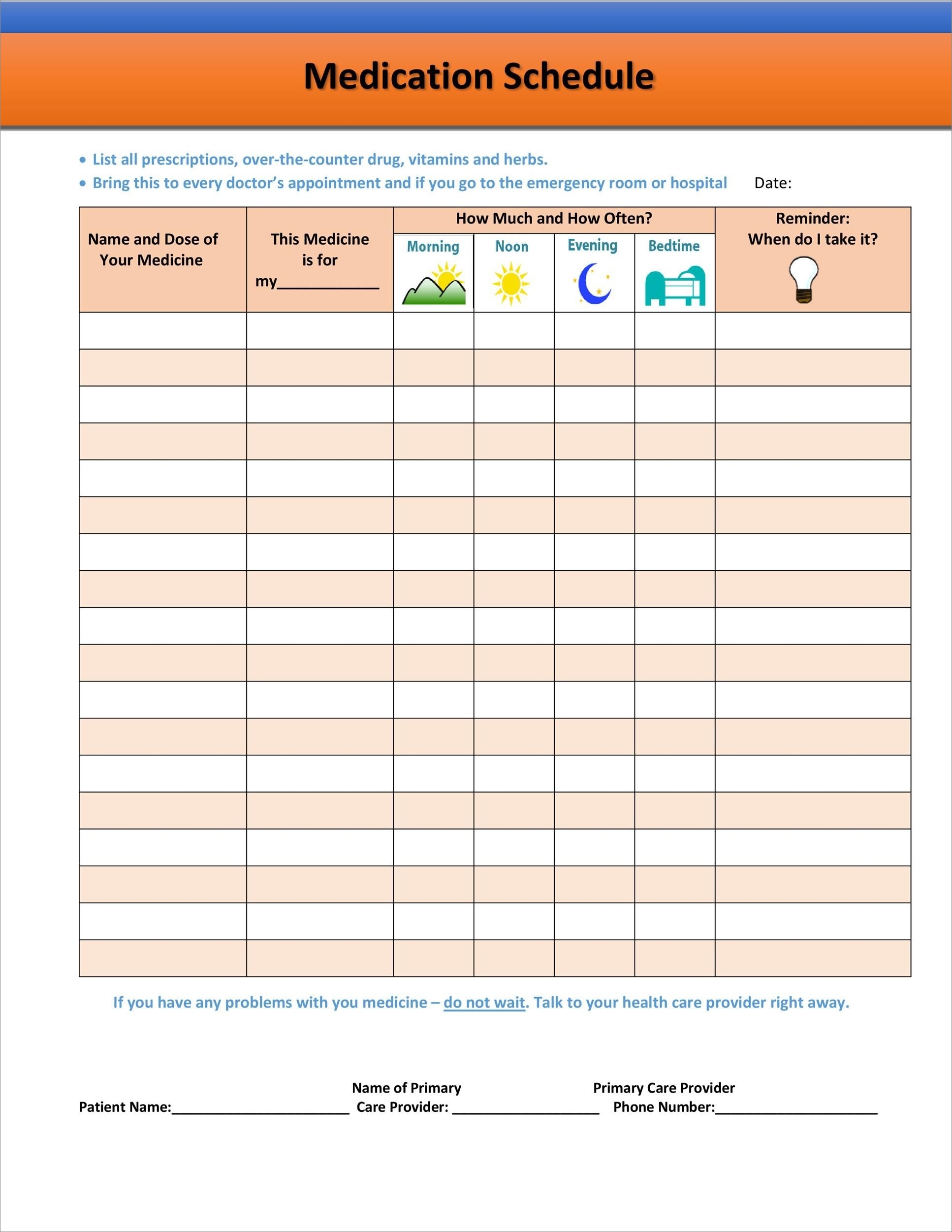When it comes to managing your health and well-being, sticking to a medicine schedule is essential. Whether you’re taking prescription medications, over-the-counter drugs, or supplements, staying organized and consistent with your dosage is key to achieving the desired results.
In this article, we will explore the importance of a medicine schedule, how to create one, and tips for staying on track. By the end, you’ll have the tools and knowledge to manage your medications effectively and improve your overall health.
What is a Medicine Schedule and Why is it Important?
A medicine schedule, also known as a medication schedule or drug chart, is a document or system that helps you keep track of the medications you need to take and when to take them. It provides a clear overview of your daily medication routine, ensuring you don’t miss any doses or accidentally double up on medications. Having a medical schedule is crucial for several reasons:
1. Avoid Missed Doses: A medicine schedule helps you remember to take your medications at the right time, reducing the risk of skipped doses that can negatively impact your treatment.
2. Prevent Medication Errors: By following a medicine schedule, you can avoid confusion and ensure you’re taking the correct medications in the right dosage.
3. Optimize Medication Effectiveness: Consistency is key when it comes to medications. Following a medicine schedule allows your body to receive the medication at regular intervals, maximizing its effectiveness.
4. Manage Side Effects: Some medications require specific timing to minimize potential side effects. A medicine schedule helps you adhere to these guidelines and minimize any discomfort.
How to Create a Medicine Schedule
Creating a medicine schedule may seem overwhelming at first, but with a systematic approach, you can easily develop a routine that works for you. Follow these steps to create your personalized medicine schedule:
1. Consult with Your Healthcare Provider
The first step in creating a medicine schedule is to consult with your healthcare provider. They will provide you with detailed instructions on how and when to take your medications. Make sure to ask any questions or express any concerns you may have during this consultation.
2. Gather All Your Medications
Collect all the medications you take, including prescription drugs, over-the-counter medications, and supplements. Having them all in one place will make it easier to organize and create your medicine schedule.
3. Identify the Dosage and Frequency
For each medication, identify the dosage and frequency recommended by your healthcare provider. This information will determine how often you need to take each medication throughout the day.
4. Choose a Method for Organization
Decide on the method you will use to organize your medications. Some options include pill organizers with compartments for each day of the week or smartphone apps that send reminders for medication intake.
5. Create a Chart or Schedule
Using a chart or schedule template, create a visual representation of your medicine schedule. Include the name of each medication, dosage, frequency, and the time of day you need to take them. You can create a daily, weekly, or monthly schedule, depending on your preferences.
6. Set Reminders
To help you remember to take your medications, set reminders on your phone or use medication reminder apps. These reminders will alert you when it’s time to take each medication, ensuring you stay on track with your schedule.
7. Review and Update Regularly
Regularly review your medicine schedule and update it as needed. If there are any changes in your medications or dosages, consult with your healthcare provider and make the necessary adjustments to your schedule.
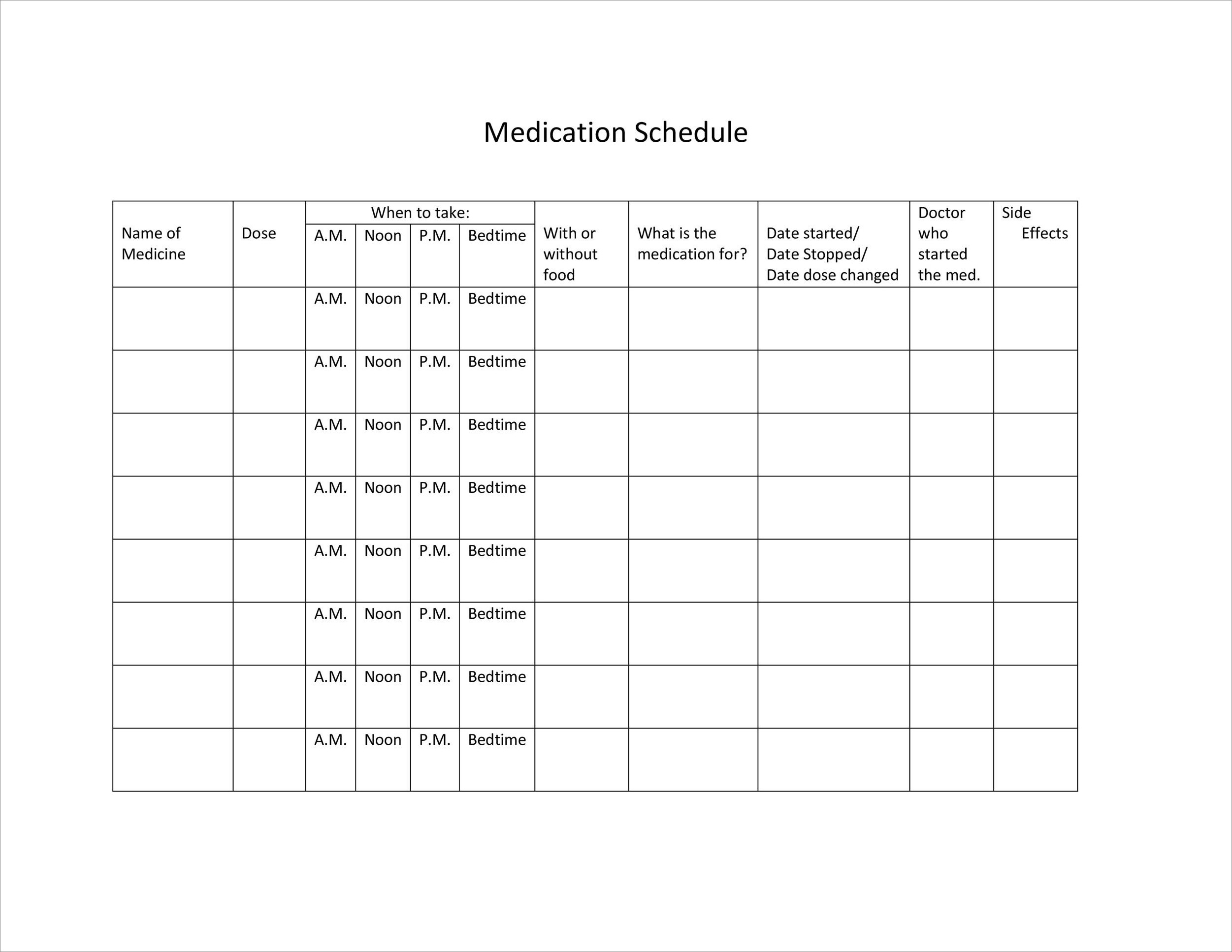
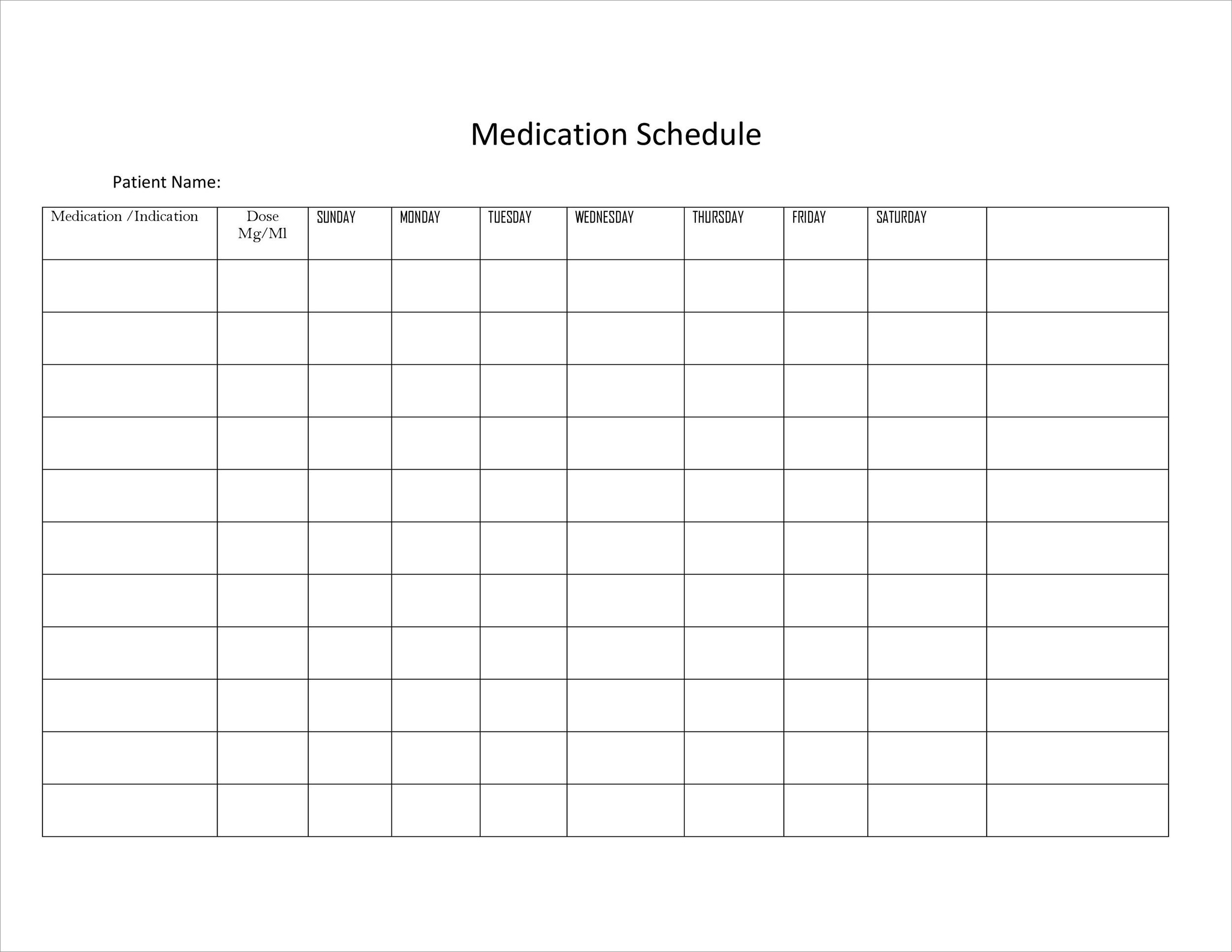
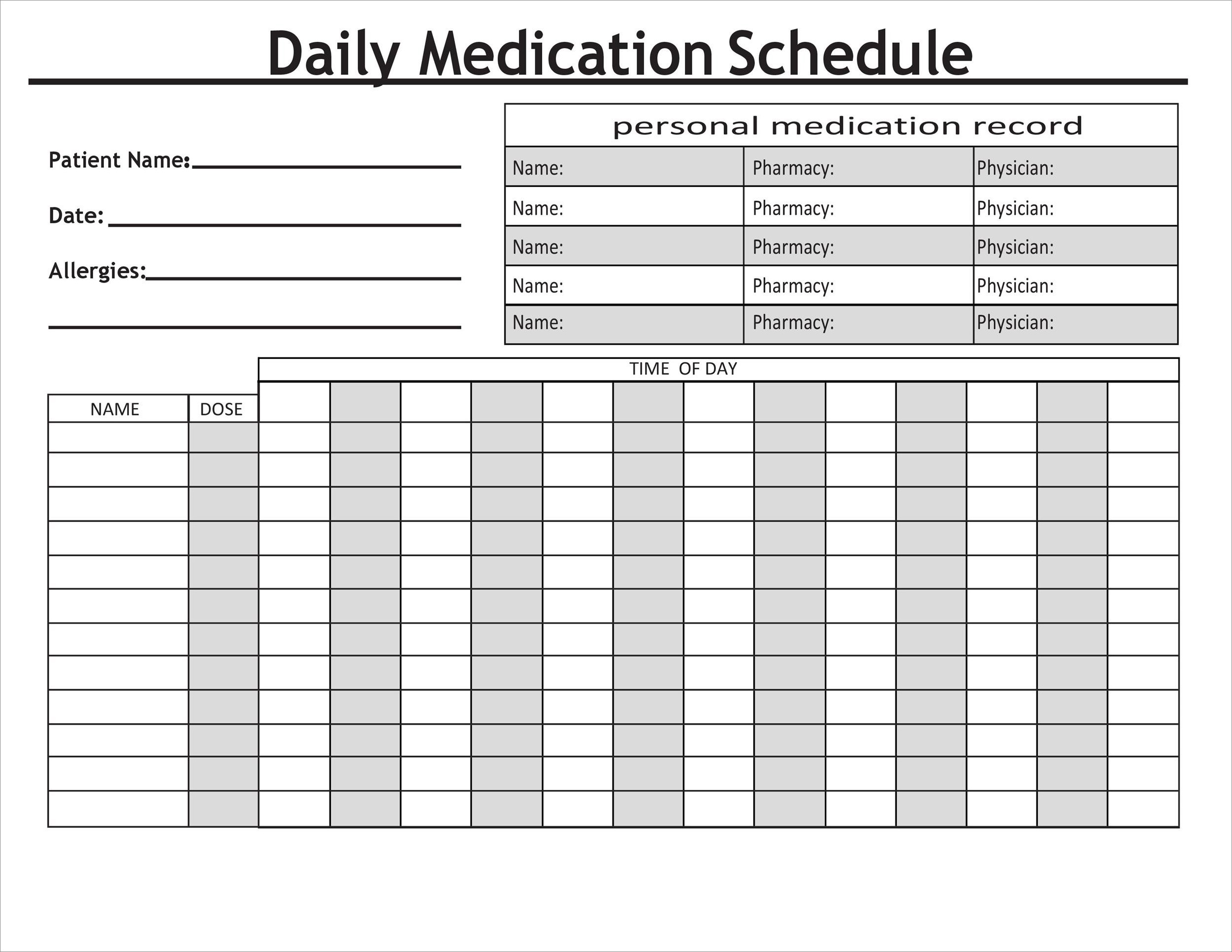
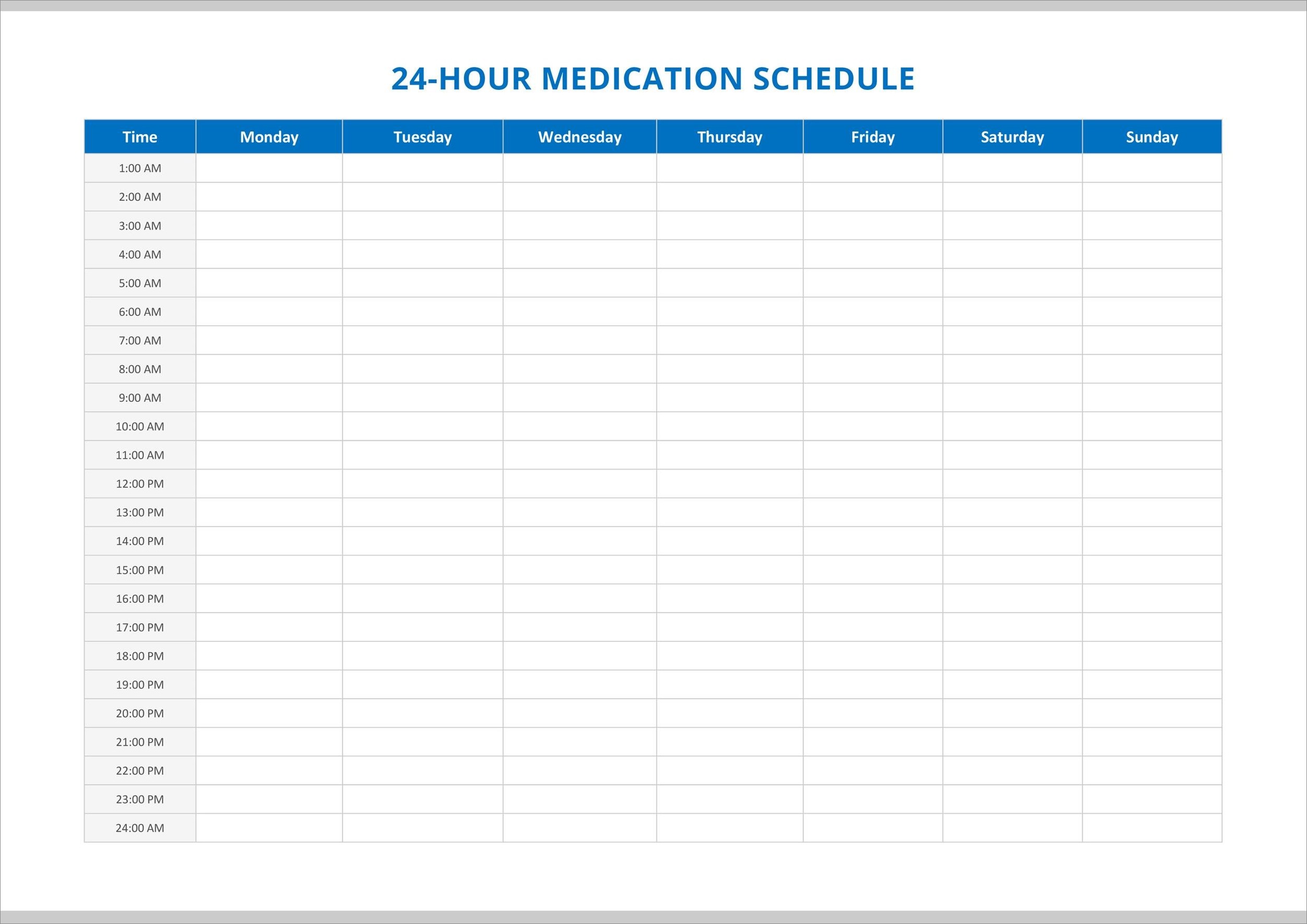
Tips for Staying on Track with Your Medicine Schedule
While creating a medicine schedule is an important first step, staying on track requires commitment and consistency. Here are some tips to help you adhere to your medicine schedule:
1. Set Alarms and Reminders: Use your phone or medication reminder apps to set alarms and reminders for each medication dose.
2. Keep Medications Visible: Store your medications in a visible and easily accessible location to serve as a visual reminder.
3. Take Medications with Meals: If possible, align your medication schedule with your meal times to make it easier to remember.
4. Use a Pill Organizer: Consider using a pill organizer to separate your medications by day and time, ensuring you don’t miss any doses.
5. Involve a Caregiver: If you have difficulty managing your medications on your own, involve a trusted caregiver who can assist you in following your medicine schedule.
6. Keep a Medication Journal: Maintain a journal to track your medication intake, noting any side effects or changes in symptoms.
7. Ask for Support: Reach out to friends, family, or support groups for encouragement and accountability in sticking to your medicine schedule.
Conclusion
A medicine schedule is a crucial tool for managing your medications effectively. By creating and following a schedule, you can avoid missed doses, prevent medication errors, optimize medication effectiveness, and manage side effects. Remember to consult with your healthcare provider, gather all your medications, identify dosages and frequencies, choose an organization method, create a chart or schedule, set reminders, and regularly review and update your medicine schedule. With these steps and tips for staying on track, you can take control of your health and improve your overall well-being.
Medicine Schedule Template Word – Download
